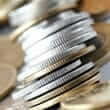Background
- Nickel is trace element that is necessary for the survival of bacteria, plants, and mammals. It is a hard, bright, silver-white metal that is present in soil, water, cocoa and chocolate, nuts, dried beans, peas, soya beans, spinach, lettuce, oatmeal, grains, fruits (including canned fruits), other vegetables (including canned vegetables) and leguminous seeds, as well as shellfish, salmon, hydrogenated shortenings, eggs, and milk. Drinking water and food are the main sources of nickel. The average American diet contains about 300 micrograms of nickel daily.
- Nickel alloys are metals created by combining nickel with another metal, such as titanium, and are used in many medical and dental applications, including dentures, dental crowns, stents, hip replacements, and screws used during bone reconstruction surgery. Nickel is also used to manufacture stainless steel. It is a common component of silver coins, belt buckles, and inexpensive jewelry. It is used in the automobile industry, electronics, chemical processes, nickel-cadmium batteries, and many household products.
- Nickel is the most common cause of metal allergy, which affects females more often than males. It may develop at any age and tends to last throughout an individual's lifetime. Symptoms of nickel allergy include an itchy rash at the site where nickel contacted the skin. This reaction may occur after chronic exposure to nickel-containing products, such as eyeglass frames, dental materials, and inexpensive jewelry. Human exposure to highly nickel-polluted environments, such as those associated with nickel refining, electroplating, and welding, may cause skin allergies and cancer of the nose and lung.
- The European Union Nickel Directive limits the amount of nickel allowed in consumer products that come into direct and prolonged contact with the skin (e.g., earrings, watchbands, and zippers). There are some indications that this regulation has reduced the amount of nickel allergy in Europe. In North America, where no regulations are in place, the incidence of nickel-induced skin allergy is increasing. Some experts believe that regulations should be in place in the United States and other countries to prevent unnecessary nickel allergies.
- Although nickel deficiency may theoretically exist, scientific evidence of any benefit from nickel supplementation in humans is lacking in the available literature.
References
- Beyersmann D, Hartwig A. Carcinogenic metal compounds: recent insight into molecular and cellular mechanisms. Arch Toxicol. 2008 Aug;82(8):493-512.
View Abstract - Das KK, Das SN, Dhundasi SA. Nickel, its adverse health effects & oxidative stress. Indian J Med Res. 2008 Oct;128(4):412-25.
View Abstract - Falagiani P. Nickel hyposensitization: a literature review. Int J Immunopathol Pharmacol. 2005 Oct-Dec;18(4 Suppl):3-5.
View Abstract - Goodman JE, Prueitt RL, Dodge DG, et al. Carcinogenicity assessment of water-soluble nickel compounds. Crit Rev Toxicol. 2009;39(5):365-417.
View Abstract - Goodman JE, Prueitt RL, Thakali S, et al. The nickel ion bioavailability model of the carcinogenic potential of nickel-containing substances in the lung. Crit Rev Toxicol. 2011 Feb;41(2):142-74.
View Abstract - Li Q, Zeng Y, Tang X. The applications and research progresses of nickel-titanium shape memory alloy in reconstructive surgery. Australas Phys Eng Sci Med. 2010 Jun;33(2):129-36.
View Abstract - Lu LK, Warshaw EM, Dunnick CA. Prevention of nickel allergy: the case for regulation? Dermatol Clin. 2009 Apr;27(2):155-61, vi-vii.
View Abstract - Navarro Silvera SA, Rohan TE. Trace elements and cancer risk: a review of the epidemiologic evidence. Cancer Causes Control. 2007 Feb;18(1):7-27.
View Abstract - Pazzini CA, Pereira LJ, Marques LS, et al. Allergy to nickel in orthodontic patients: clinical and histopathologic evaluation. Gen Dent. 2010 Jan-Feb;58(1):58-61.
View Abstract - Pizzutelli S. Systemic nickel hypersensitivity and diet: myth or reality? Eur Ann Allergy Clin Immunol. 2011 Feb;43(1):5-18.
View Abstract - Plotino G, Grande NM, Cordaro M, et al. A review of cyclic fatigue testing of nickel-titanium rotary instruments. J Endod. 2009 Nov;35(11):1469-76.
View Abstract - Schram SE, Warshaw EM, Laumann A. Nickel hypersensitivity: a clinical review and call to action. Int J Dermatol. 2010 Feb;49(2):115-25.
View Abstract - Thyssen JP, Uter W, McFadden J, et al. The EU Nickel Directive revisited--future steps towards better protection against nickel allergy. Contact Dermatitis. 2011 Mar;64(3):121-5.
View Abstract - Thyssen JP, Carlsen BC, Menné T. Nickel sensitization, hand eczema, and loss-of-function mutations in the filaggrin gene. Dermatitis. 2008 Nov-Dec;19(6):303-7.
View Abstract - Wild P, Bourgkard E, Paris C. Lung cancer and exposure to metals: the epidemiological evidence. Methods Mol Biol. 2009;472:139-67.
View Abstract







